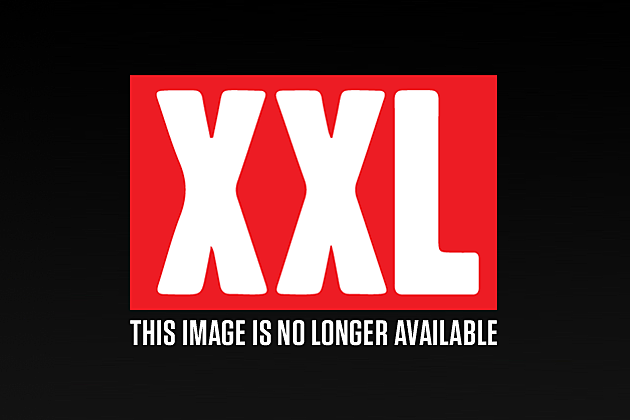
BLOG: Lil Wayne and the Ghost of Mike Jones
As yet another year is poised to go the way of DMX’s career (and personal freedom) and Diminutive Dwayne sits comfortably atop the hip-hop throne as the best rapper alive not married to Beyoncé or about to do a stretch for mistaking the ATL suburbs for Fallujah, I—a young, inquisitive, and handsome magazine editor—have been thinking about what exactly the Martian’s accomplishment really means.
I was all set to hit you with a hot 16-part blog series on Wayne’s inability to correctly complete a simile (“Abra cadabra, I’m up like Viagra/I just do this shit for my click like Adam Sandler”) or make anything resembling sense (“Money so old it’s growin’ white hair/Young Money, baby”) and how this is either a side effect of living on a diet rich in sizzurp and cannabis or a revolutionary act of linguistic (t)errorism aimed at lames such as myself who insist on reading things like books and magazines when the educational paradigm has shifted completely to start and stop with YouTube videos and blog posts, but, as an early X-mas present to all y’all, I decided to spare you that. For now.
So back to the point at hand: The Lilliputian’s rare double of commercial and critical success—a million in first-week sales and best-of-the-year nods from sources as diverse as New York magazine and your mama—has truly made Wayne an alien in the music world. What sticks out about Wayne’s accomplishment is how rare it is in today’s game—to get both sales in the stores and plaudits in the press. And, yet, the fact that Wayne’s two-headed success is still the exception and not the rule illustrates perfectly hip-hop’s inability to deal honestly with how it figures achievement.
What I’m talking about is the way rap has become, and stayed, all about SoundScan numbers, and, more precisely, those for the first week. All we ever hear about is sales sales sales, as if the success of the label’s pre-release marketing blitz and the traction of radio singles with Midwestern White sorority girls is what it’s all about. Out of the other side of hip-hop’s collective maw comes all that talk about niceness, about spittin’ how you live it, all that Cornel West-type chuuch-ing about providing a voice for the voiceless, about refusing to be silent or silenced, all that lip-service to uplift and empowerment and repping the hip-hop culture and for us by us and…
Indeed, rap has been having it both ways for quite a while, with its expressed desire for g.o.o.d. music and its bewildering insistence that quantity has something to do with quality. That said, no one can stick to the narrative for too long, because it’s not really possible. When you really stop to think about it, all this shouting out of SoundScan numbers makes about as much sense as Baby with a pack of gum in his mouth.
Take, for instance, the case of young civil rights activist Soulja Boy, on the one hand, and, on the other, Killer Mike. All this is fairly obvious, I know, but it still seems worth saying. The reason SB (and Kanye and Wayne and T.I., and whoever else is still caking up in these breadless times) sells is because he appeals to a broader audience than do the Plieses of the world. (Check Plies’s first-week numbers Wednesday for confirmation of this fact. My prediction: 724. Note: Not 724K.) The reason Killer’s last platter—which had some heads around tha office wanting to horseshoe an XXL-rating wreath around Mike’s neck—had all the suction of Superhead with strep throat is because, when you really get down to it, the hip-hop audience as a whole is no more interested in complex, cultivated, or cutting-edge music than is the audience that buys records from four-leaf chancre Nickelback or Billy Cyrus’s daughter/penitentiary enticement.
Or, rather, it’s that the rap audience, whatever it might say with its jewel-encrusted mouth, tells the true, and different, story of what it wants and needs with its biker-chain, hipster wallet. Although the likes of Jay-Z, Eminem, Kanye, Wayne, T.I., and 50 Cent are indeed hugely talented, high-quality artists, their true genius is their ability to make music that appeals to people who listen to music other than rap. Big SoundScan numbers reveal the breadth of someone’s audience, not necessarily the quality of their music. The music may be remarkably good (Wayne, ’Ye, Em, Jay, T.I. [except T.I. vs. Tip, of course]), or it may be laughably bad (Soulja Boy, ’90s Puff), but it sells big numbers for the same reason: commercial pop appeal, with the right marketing/imaging/branding push behind it.
Just compare the sales histories and the awareness by the larger, non-rap-head culture of Killer Mike and Mike Jones if you really want to blow your mind. That Killer has more years in the game than MJ has actual brain cells means nothing, in the end, when it comes to record-industry success. And if rap really is just about the by-any-means-necessary, get-rich-or-die-tryin’ race to the paper, then how much smarter, really, is Mike, Killer than Mike Jones—or Soulja Boy, for that matter?
Unfortunately, Wayne’s amazing year won’t make rap fans any more honest about the way they talk about their favorite music; it won’t make anyone stop equating big sales numbers with big quality, big achievement, and big success. In fact, it’s likely to have the opposite effect. So just remember: Every time you bring up someone’s SoundScan figures in an argument over this or that rapper, what you’re really doing is laying the groundwork for the next Mike Jones, who, well, might actually be Mike Jones. And if that happens, not even Hova will be able to save your souls.—Devo





